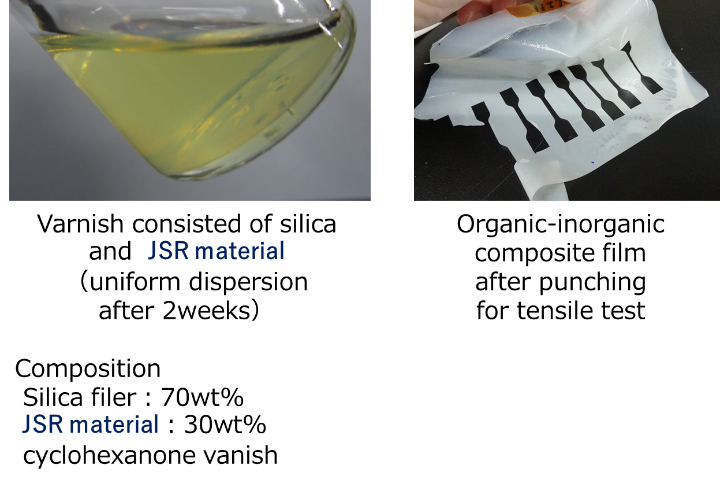JSR Develops Highly Adhesive, Highly Dispersive Materials
JSR Corporation (Headquarters: Minato-ku, Tokyo, CEO: Eric Johnson, “JSR”) has developed a new material (HAG) that is highly adhesive and dispersive to meet the needs next generation devices. HAG is capable of controlling the interface of dissimilar materials, such as inorganic-organic associations by ensuring adhesion to low-adhesion substrates with low polarity. Inorganic and organic fillers added for controlling physical properties, such as heat resistance, thermal diffusion and thermal expansion, can be uniformly dispersed in high density and used as an additive material to improve the tradeoff of physical properties.
Against the backdrop of the full-scale development of fifth-generation (5G) and sixth-generation (6G) mobile communications systems and autonomous driving technology, various applications and devices are being developed in the fields of communications and mobility electronics, such as low-dielectric substrate materials, to realize high-speed communications under harsh environments including those with high temperatures and vibrations.
Leveraging its extensive network in the digital solutions business and its accumulated knowledge of material design, JSR will continue to pursue new solutions that lead to “Materials Innovation”.
This research was exhibited at the 5th 5G Communication Technology Exhibition taking place Wednesday, June 29, 2022 to Friday, July 1.
[Reference]
Material concept
By making full use of our company's unique material design technology and new technologies derived from open innovation, we have developed a new interface control unit that achieves high adhesion and high dispersion. The stabilization energy of the newly developed interface control unit (NewCore) to the gold atom is much larger than that of the conventional phenyl structure, and the large interfacial interaction contributing to adhesion and dispersibility is supported by computational chemistry.
Physical properties such as solubility, compatibility, thermal properties, water absorbency and electrical properties can be designed in a functional unit, and properties can be developed according to the application. Terminal functionalization is also possible, and grades with functional groups capable of cross-linking with cured resins can be provided.
One of the characteristics of this newly developed material is that it uses components derived from bio-raw materials as a part of raw materials in consideration of SDGs.
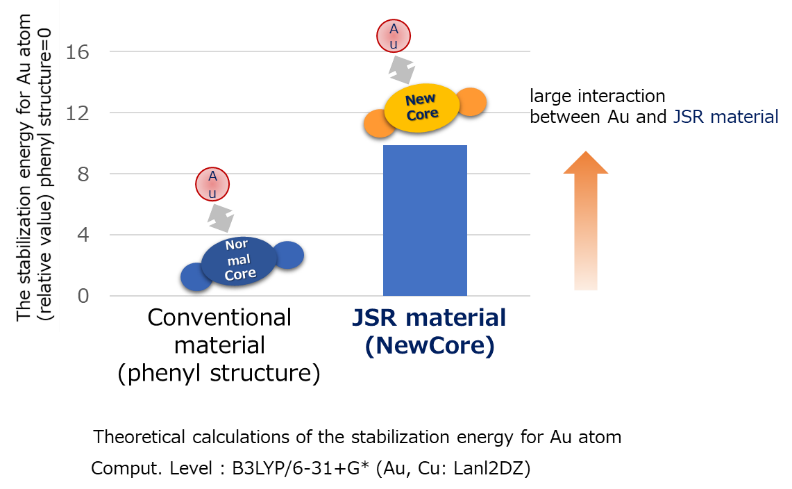
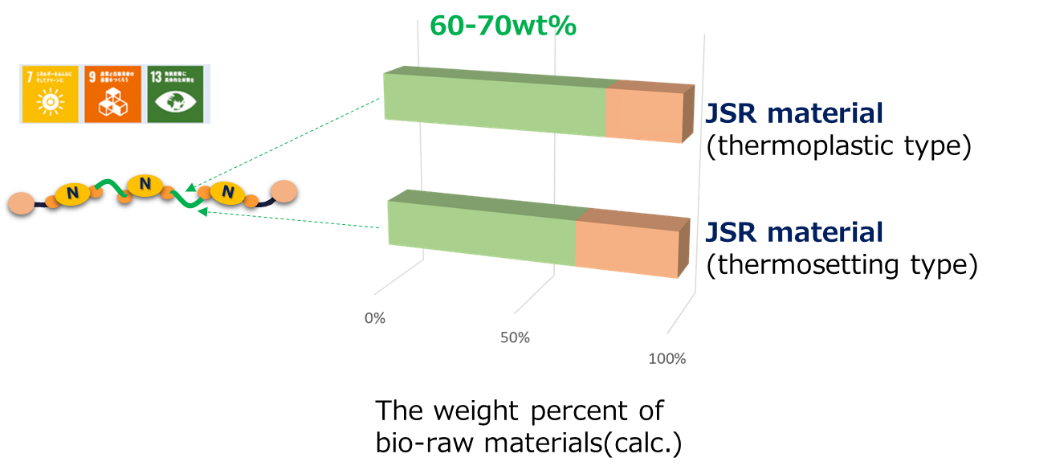
Contribution to our company's SDGs
https://www.jsr.co.jp/sustainability/2021/management/sdgs.shtml
Join various dissimilar materials
This material, which was developed by taking advantage of our company's strengths in a wide range of basic technologies related to resins, exhibits strong adhesion even in dissimilar material combinations. It has been confirmed that it exhibits high adhesion to inert metal surfaces such as gold. It also has room temperature laminate adhesiveness and can be applied to adhesives.

Electrical insulation in the bonded state has been confirmed by an advanced accelerated life test (HAST test at 121 °C/85% TH/10 V) and dielectric breakdown voltage evaluation (under 25,150 °C conditions), and can be used for applications requiring high reliability.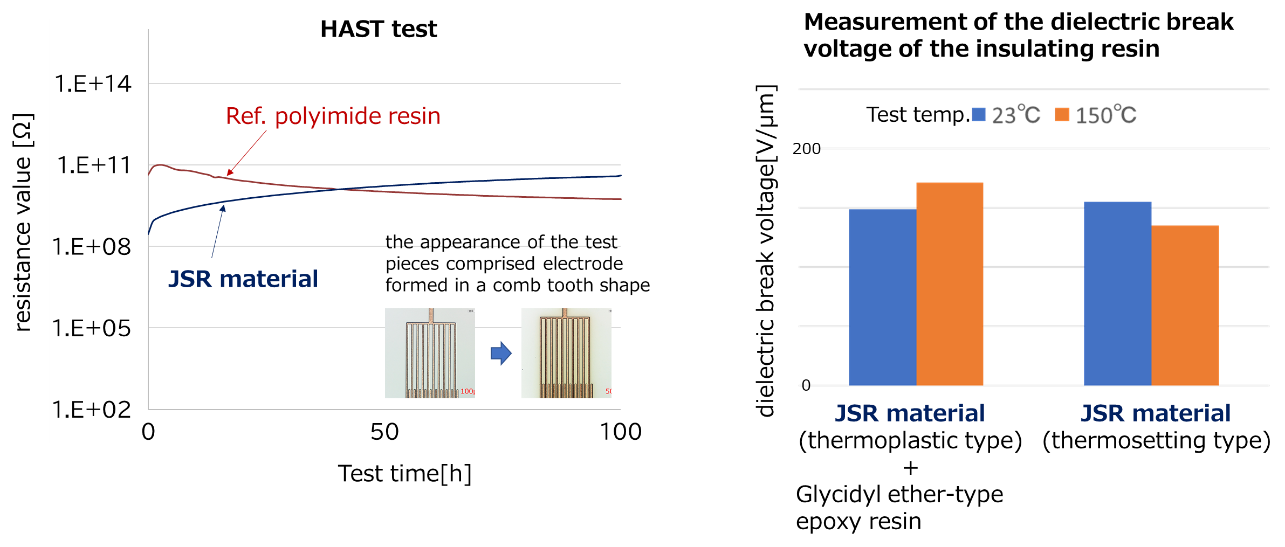
Also useful for dispersing fillers.
As an example, high dispersibility of silica filler has been confirmed. After preparing a dispersion * 1 in which silica filler was pre-dispersed with the developed material, a filler dispersion * 2 in which epoxy resin was added was prepared. When the prepared dispersion was allowed to stand overnight, no precipitate of silica filler was observed, confirming the effectiveness of the developed material as a dispersant. For the purpose of comparison, precipitation of silica filler occurs in the dispersion of epoxy resin and silica filler without using this developed material.
*1) Silica filler: developed material = 97: 3 wt * 2) Silica filler: resin component = 70: 30 wt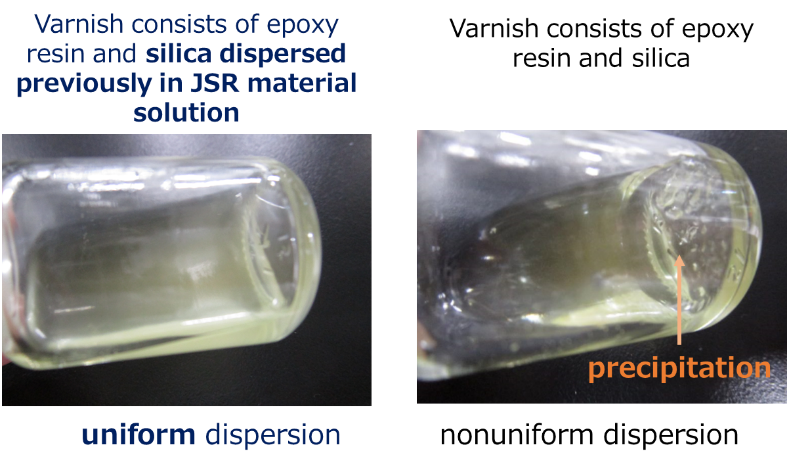
Filmable
The developed material can also be used as a main resin. Dispersion liquid * 3), in which the filler is dispersed in the developed material, exhibits high storage stability and can be easily made into film. In spite of the filler addition system, a flexible organic-inorganic composite film is obtained, and it is possible to give elongation and toughness. It is also expected to show high reliability in impact tests such as cold heat cycles. In addition, it has been confirmed that the elasticity can be controlled by using epoxy resin, etc., and it is assumed that it can be used as a material for modifying a curing agent.
*3) Silica filler: Developed material = 70: 30 wt